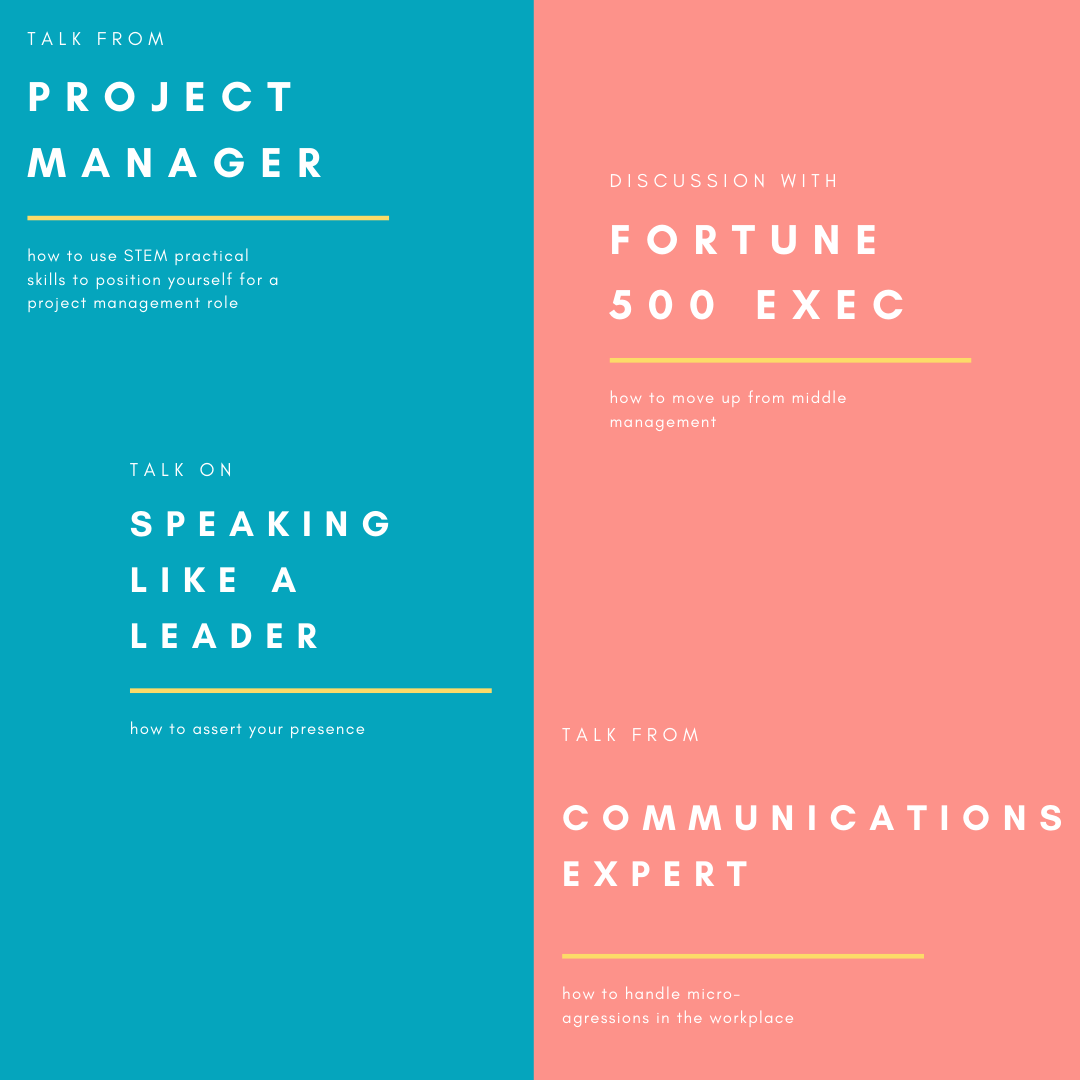Summits: Far from a One-Hit Wonder
Ida
Content Contributor, HeySummit
Here at HeySummit, we're always looking for new ways to help you make the best of your summits. We're doing our best to feature all the ways HeySummit has been used and loved by our community of users. In this post, the spotlight's on Michele Heyward of PositiveHire. Read on and get inspired 🏔️
The Challenge
In her previous job as a civil engineer, Michele Heyward noticed that so few of her colleagues, especially superiors, were Latina, Black or Indigenous women.
She watched many of her brilliant peers leave STEM professions in their early to mid 30s because they weren't getting promoted despite having the right qualifications. Not one to sit by and watch, Michele started PositiveHire, a tech company which focuses on connecting experienced Latina, Black and Indigenous women holding STEM degrees with management roles in corporate America.
Like HeySummit, it focuses on building community- using traditional recruitments tactics but also taking into account their life experiences to help predict the best-fit employer to help advance their careers. Recognizing that a lot of women of color weren’t getting access to any form of executive training, Michele decided to use HeySummit to fill this gap. Behold- PositiveHire Summit was born!
Held twice a year (in February and November), her summits bring in experts to help these women understand the type of resources and tactics they need, and where to find them, to equip themselves with the necessary skills to move up the career ladder. Topics include: how to have executive presence, how to negotiate salary, and how to be a negotiator in business.
Anatomy of a summit
Let your network inspire you
Now in her fourth year of making summits (with hopefully plenty more to come), her greatest inspiration when choosing themes is her community. Besides PositiveHire, Michele is a member of several Facebook groups for women of color in STEM, and actively asks for feedback on the type of skills and tools they feel they lack to make bold career moves. With a pretty short window between summits (just 3 months for the February summit!), it’s this continuous cycle of feedback that helps Michele create and source the content most in-demand amongst her audience.
Not content with just 2 summits a year, Michele also holds monthly webinars to grow her following, position herself as a thought leader and drum up interest for future PositiveHire summits. Her online engagement has also helped her find speakers as she is always on the lookout for fellow community members, who are experts in their subject matter, to share their stories and advice with her summit audience.
Take your audience on a journey
With a well-defined, narrow target audience and a clear mission, one would think the summit would write itself. In reality, with an audience so niche and a message so distinct, the summit could fall into one of two categories:
too simplified and generic or overly complicated
Michele wanted to bring something fresh to this community in a way that was relatable to every member of her audience- no matter the stage of career they were in. So, she got creative.
The key was ensuring speaker diversity and offering talks on a wide variety of topics covering different career stages and transitions. Each summit was, essentially, a guide on how to advance your career, starting from the bottom and finally reaching the top.
Michele took her attendees on a career journey that looked a little like this:

Know your speakers
Michele’s rule of thumb is, if you're looking for new summit speakers, you should start a relationship at least six months beforehand. She does have some exceptions, of course- friends/ colleagues she’s known for years, or people she meets by chance at conferences or masterminds. When identifying potential speakers, she does her homework. She looks at their social media posts, blogs, books and articles to understand their level of expertise and how they would best fit into her summit.
Since each new summit has a different theme, Michele has to find new speakers each time. To make her job easier, she’s created set templates to approach speakers with- tailoring them each time but making sure to include the summit’s theme, the skillset of the audience, why their expertise would be a good fit and how participating in the summit could benefit them. Furthermore, she draws up a timetable and sets reminders to get in touch with speakers regarding summit plans and logistics. Summits can be overwhelming to organize, so having a tool to track your progress in all aspects is essential.
Summit successfully: Michele’s top tips
Attract your tribe
For Michele, it’s all trial-and-error when it comes to getting the word out. At her first summit, she did not have an email list, and paid for Facebook ads. Eventually, she experimented with livestreams and promotions on Facebook, Periscope, Instagram, LinkedIn and Twitter, which brought in more signups- averaging around 300 per summit!
Michele shares that a friend of hers once told her, “you either have more money than time or more time than money”. As the owner of a start-up, she’s a firm believer in putting in the hours to get the best results.
Besides livestreaming and spreading the word via posts on social media, she sometimes direct messages people she thinks would be interested in her event. With all these different methods of promotion, she makes sure to track where her sign-ups come from and prioritizes those methods for the next summit. From the data she’s collected so far, LinkedIn has had the most success- most likely because her target audience are executives and those in middle-management (essentially LinkedIn's target audience).
Speakers also draw in attendees. Not wanting the summit to create too much extra work for them, she gives them social media copy, hashtags and graphics to use on Facebook, Instagram, Twitter and LinkedIn- depending on the speakers’ follower base. Her summits also benefit from word-of-mouth advertising. She’s had engineers, managers and recruiters, among others, messaging her asking to share the event on company newsletters and internal sites; as well as provide contact details of people they thought would be interested in the summit.
Know your audience
Once she’s got her attendees, she makes it a point to get to know them. Two questions she always asks registrants is: the industry they’re in and their level of seniority. For Michele, it’s instrumental in planning future summit themes and topics.
Ever the meticulous planner, she uses the drop-down option HeySummit provides in her questions, so she can narrow down and group their exact industries and seniority levels. While it’s often important to keep these open-ended, industries and job titles vary so much that Michele found it was best to provide the options instead. After all, some career websites list over 12,000 different job titles in the US!
Tried and tested planning process
With each summit, the theme and content differed, but things like branding and advertising social media copy usually stayed the same. Michele used Google Drive to house all of her summit documents from templates to graphics to workloads and timetables. This ensured she had everything in one place and could come back and access whatever she needed when setting up a new summit.
It’s easy to think that with this much planning, Michele’s summits always go on without a hitch. “Not true,” she laughs. Like most things in life, you can do all the planning in the world and still face new challenges each time. Michele calls each summit a learning process. With all her talks happening live, her biggest challenge was when a speaker did not show up to the livestream.
Michele, as you’d expect of an experienced engineer, remained calm, and after about 15 minutes of waiting for the speaker, decided to take charge of the talk and hosted a dialogue with attendees- answering any questions they had and providing them with a platform to ask each other for feedback and advice. About 30 women stuck around for this, a true testament to Michele’s ability to think on her feet and make the best out of an unfortunate situation.
Live = engagement
Hosting live talks comes with its fair share of risks, but for Michele, it’s the one thing she won’t compromise on. Why? Her audience. As women of color in the STEM industry, it was important for Michele that her attendees felt heard during the summit, something that may not always happen for them at work. She wanted to ensure her speakers were able to engage virtually with fellow speakers and attendees. Live talks work better when building communities and carving spaces for those who do not have that in their workplace. Thanks to some excellent planning, the live sessions have created greater opportunities rather than problems.
One final tip she has for fellow HeySummiteers keen to experiment with live talks is to start by adding one live session into their usual pre-recorded mix, such as a kick-off or wrap up session, and then gather feedback from attendees to gauge success.
To watch Michele and her speakers in action, head here for replays of PositiveHire’s latest summit- Redefine F.A.I.L: Foundation to Advance, Impact and Lead.
Try HeySummit free
Your All-in-One Event Platform. Easily grow and engage your community online and offline, irrespective of scale.
Share this article on:
